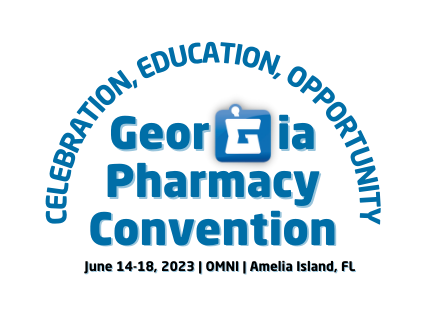Therapists trip themselves, PBMs block generics, DEA targets telehealth, and more
01 Mar 2023
Posted by Andrew Kantor
DEA wants to slash tele-health prescriptions
The DEA wants to go back to pre-pandemic rules that severely limited telehealth visits where controlleds were prescribed.
After three years of getting comfy with telehealth, the change, if approved, would require more in-person visits in order for physicians to prescribe C-II drugs like Adderall or OxyContin. Some drugs would only require an initial in-person visit, while others would require one every 30 days.
That could mean people who may seeking treatment from a doctor who is hundreds of miles away need to start developing plans for in-person visits with their doctors now. […] Patients will have six months to visit their doctor in person when the regulation is enacted.
After three years, though, telehealth has boomed, and it gets high marks from both patients and prescribers. Throwing a regulatory wrench back into the works is likely to get some serious pushback.
Convention registration is open!
That’s right! Today’s the day — register now to grab that early-bird rate for the 2023 Georgia Pharmacy Convention, June 14–18 at the Omni Amelia Island Resort!

Visit gphaconvention.com for all the details (the site is being updated as you read this, in fact) — and we’ll see you on the beach!
Who’s blocking the generics?
Once upon a time, generic drugs were quick to grab 80% of the market — within a few months, in fact. But today, according to a report from the Association for Accessible Medicine, “many generics are experiencing slower than expected adoption.” Even the top 10 generics only had a 70% market share.
That means patients end up with higher co-pays when a less-expensive alternative is right there in front of them. So, who is stalling the move to generics?
The answer starts with “P” and ends with “armacy benefits managers.” As the AAM put it, “These delays are driven by the perverse incentives of PBMs to prefer high-priced drugs with high rebates over drugs with lower list price.”
It’s not just patients; it’s taxpayers, too. Fewer than two-thirds of Medicare Advantage and Part D plans cover the new generics that debuted in 2016. (Commercial plans did a bit better, covering almost half of those new-in-2016 generics.)
And PBMs go to great lengths to keep generics down. CVS, the report explains, used a “do not substitute” strategy “that allegedly prevented consumers from obtaining low-cost generics if the company profited through rebate agreements from the brand drug.”
To compound matters, the company allegedly trained call center representatives to mislead patients on pricing for the generic options and to discourage beneficiaries from filing formulary exceptions. And the company executed the scheme by refusing to stock the generic versions in its pharmacy, even for patients willing to pay cash.
More ivermectin follies
The same doctors who pushed ivermectin as a Covid cure (hint: it’s not) are now saying the horse dewormer can — miracle of miracles! — treat flu and RSV, too*. Apparently there’s a huge worldwide conspiracy to keep this fact from the masses.
Or maybe there’s simply no evidence at all, and the docs doing this are making bank charging gullible people hundreds of bucks to write them prescriptions.
* It’s also a floor wax and tasty dessert topping.
New tests for cancers could be coming
From Penn State: Researchers have developed a blood-plasma test that can detect and track glioblastoma tumors by measuring levels of an antigen receptor called IL13Rα2. They found that IL13Rα2 can serve as a biomarker for glioblastoma because it’s “significantly overexpressed in tumor tissue.”
The test is meant to give physicians more information about the progress of a tumor than can be had with an MRI or CT scan, or even from a needle-sized biopsy.
From Australia’s University of Technology Sydney: Instead of a biopsy, Aussie biomed engineers have developed a “static droplet microfluidic device” that can “rapidly detect circulating tumour cells that have broken away from a primary tumour and entered the bloodstream.”
It’s based on the idea that tumor cells produce more lactate than healthy ones, but this device is crazy sensitive — “38,400 chambers capable of isolating and classifying the number of metabolically active tumour cells” in a single, small device.
The Long Read: Breakthrough Drugs, Break-bank Pricing edition
When a breakthrough cure enters the market — a cure, not just a treatment — it can cost … well, a lot. Insurance companies will often (reluctantly) pay for high-priced treatments, but that’s becoming an issue with cures.
Cures cost more, but over 10 or 15 years they’re cost-efficient for insurers … but only if the patient stays with the same payor. (Otherwise the cost savings goes to the new insurer, which doesn’t have to pay for treatment.)
Everything you need to know about the Covid-19 lab-leak vs natural-origin theories
- Don’t listen to non-scientists. They tend to conveniently leave out important details.
- No one thinks the SARS-CoV-2 virus was developed in a lab or as a weapon. The options are accidental lab leak or jumped naturally to humans.
- Fifteen (!) government agencies have weighed in on what they sorta-kinda believe is the virus’s origin; the Energy Department is just the latest.
- Seven (CDC, NIAID, the National Intelligence Council, and four unnamed intelligence organizations) lean toward the virus originating naturally, probably jumping to humans from bats.
- Four (FBI, DoE, and two unnamed intelligence organizations) lean toward the virus leaking from a lab that was studying a natural virus. The FBI is the only one to say it has “moderate confidence” in that assessment; the other have “low confidence.”
- Four (CIA, and three unnamed intelligence organizations*) are undecided and think both theories are possible.
- Two peer-reviewed studies say the virus emerged in the Huanan Market, not a lab.
- The WHO is undecided.
Will we ever know for sure? Probably not. An unclassified intelligence briefing gets to the heart of the matter:
China’s cooperation most likely would be needed to reach a conclusive assessment of the origins of Covid-19. Beijing, however, continues to hinder the global investigation, resist sharing information and blame other countries, including the United States.
Sources: A Forbes overview of who thinks what. The Atlantic’s coverage of the debate. An unclassified intelligence briefing for the president. Also helpful: a Forbes timeline of the theories.
* Dang, we have a lot of those.
Captain Obvious tastes the rainbow
“Personal Psychedelic Use May Be Common Among Psychedelic Therapists”
Short Takes
Pharma puts its money in digital
For the first time, pharmaceutical companies are spending more than half their ad budgets on digital advertising, relegating traditional “linear TV” to second place.
Med shortages, Peach State perspective
Georgia pharmacies — and a UGA professor — are featured in a WSB news story about the medication shortages facing patients, some of whom have to pharmacy hop to find their meds.



